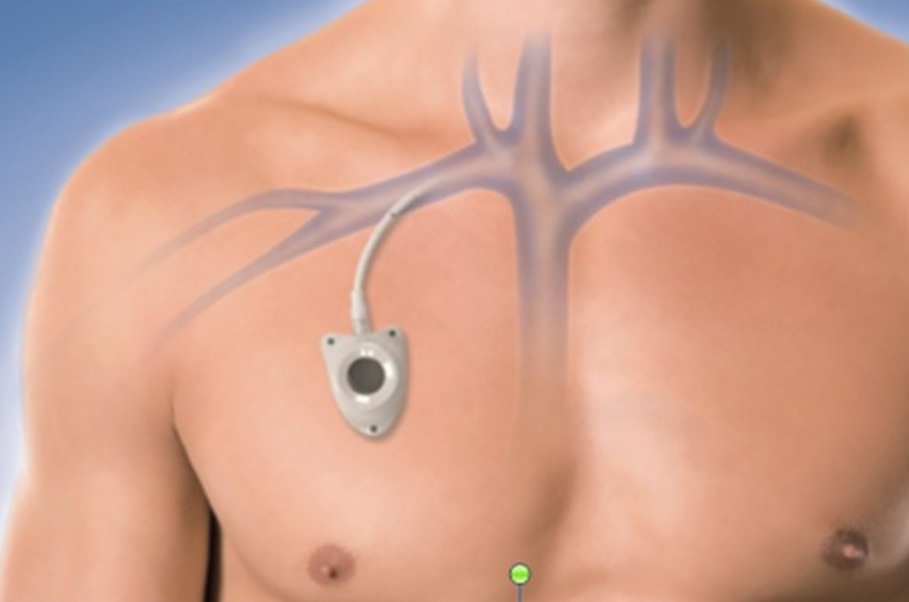
Living with a chronic illness or undergoing long-term treatment such as chemotherapy can be physically and emotionally taxing. However, medical advancements have revolutionized the way patients receive care, including the use of porta cath insertion a procedure designed to streamline treatment and enhance the overall patient experience. In this blog post, we’ll delve into the intricacies of insertion, its role in port-a-cath chemotherapy administration, and the benefits it offers to patients undergoing treatment.
Understanding Portacath Insertion
Portacath insertion, also known as implantable venous access device placement, is a minimally invasive surgical procedure performed to provide long-term access to the bloodstream for medication administration, blood draws, and other medical procedures. During the procedure, a small medical device called a porta cath or port-a-cath is implanted beneath the skin, typically in the chest area, and connected to a central vein. The porta cath consists of a reservoir or chamber with a self-sealing silicone septum, which can be accessed using a special needle for medication infusion or blood sampling.
The Role of Chemo Port a cath
For patients undergoing chemotherapy or other long-term treatments requiring frequent intravenous (IV) infusions, porta cath insertion offers several advantages over traditional methods of vascular access. Unlike peripheral IV catheters, which may cause discomfort, vein irritation, and limited mobility, porta-caths provide a stable and reliable access point for administering port-a-cath chemotherapy drugs and other medications directly into the bloodstream. The porta cath’s durable construction and secure placement minimize the risk of complications such as infection, infiltration, and vein damage, allowing patients to receive treatment safely and efficiently.
Enhancing Patient Experience with Portacath
Portacath insertion plays a crucial role in enhancing the overall patient experience during chemotherapy and other medical treatments. By providing a discreet and convenient access point for medication administration, portacaths eliminate the need for repeated needle sticks and venipunctures, reducing patient discomfort, anxiety, and needle phobia. Patients can undergo treatment with greater ease and confidence, knowing that their porta cath provides reliable and hassle-free access to medication whenever needed. Additionally, the streamlined nature of insertion minimizes procedural time and recovery, allowing patients to resume their daily activities more quickly and maintain a higher quality of life throughout their treatment journey.
Improving Treatment Outcomes
Beyond its immediate benefits for patient comfort and convenience, porta cath insertion can also contribute to improved treatment outcomes and overall health outcomes. By ensuring consistent and reliable access to medication, porta caths help healthcare providers maintain optimal treatment adherence and dosing accuracy, reducing the risk of treatment delays, interruptions, or dosage errors. This, in turn, can lead to better therapeutic efficacy and disease management, ultimately improving patient outcomes and quality of life. Additionally, the reduced incidence of complications associated with porta cath use, such as infection and vein damage, can lower healthcare costs and resource utilization, benefiting both patients and healthcare systems alike.
Patient Empowerment and Autonomy
Portacath insertion empowers patients by giving them greater control over their treatment experience and promoting active participation in their care. Patients with porta caths can take ownership of their treatment regimen, participating in discussions with their healthcare team about treatment options, scheduling preferences, and individualised care plans. The ability to access medication at home or in outpatient settings with minimal intervention allows patients to maintain their independence and autonomy, fostering a sense of empowerment and self-efficacy throughout their treatment journey. By facilitating patient-centered care and promoting shared decision-making, porta cath insertion helps patients navigate the challenges of chronic illness and treatment with dignity, resilience, and confidence.
Minimising Discomfort and Anxiety
Another advantage of insertion is its ability to minimize discomfort and anxiety associated with port-a-cath chemotherapy treatment. For many patients, the prospect of undergoing chemo port a cath can evoke feelings of fear, apprehension, and uncertainty. The thought of undergoing multiple needle sticks for each treatment session can exacerbate these emotions and contribute to heightened stress levels. However, with a porta cath in place, patients experience less pain, bruising, and anxiety during chemotherapy sessions. The porta cath provides a secure and reliable access point for administering medications and fluids, eliminating the need for repeated venipunctures and reducing the risk of complications such as infection and phlebitis. As a result, patients can approach each treatment session with greater confidence and peace of mind, knowing that their comfort and well-being are prioritised.
Conclusion
In conclusion, porta cath insertion plays a pivotal role in streamlining treatment and enhancing the overall patient experience for individuals undergoing port-a-cath chemotherapy and other long-term medical treatments. By providing reliable and convenient access to the bloodstream for medication administration, porta caths alleviate patient discomfort, anxiety, and logistical challenges associated with traditional methods of vascular access. With its potential to improve treatment adherence, dosing accuracy, and treatment outcomes, insertion represents a valuable tool in modern healthcare delivery, empowering patients to take control of their treatment journey and achieve optimal health and well-being. As healthcare continues to evolve, insertion will undoubtedly remain an essential component of patient-centered care, revolutionising the way we approach chronic illness management and treatment delivery in the 21st century.



